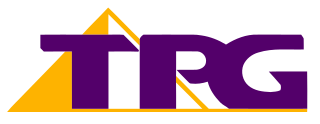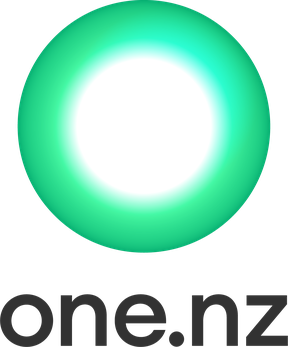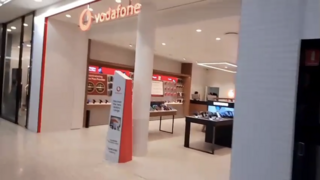Related Research Articles

Telstra Group Limited is an Australian telecommunications company that builds and operates telecommunications networks and markets related products and services. It is a member of the S&P/ASX 20 and Australia's largest telecommunications company by market share.

Telecommunications in Australia refers to communication in Australia through electronic means, using devices such as telephone, television, radio or computer, and services such as the telephony and broadband networks. Telecommunications have always been important in Australia given the "tyranny of distance" with a dispersed population. Governments have driven telecommunication development and have a key role in its regulation.
Singtel Optus Pty Limited is an Australian telecommunications company headquartered in Macquarie Park, a suburb in the Northern Sydney region of Sydney, New South Wales, Australia. It is a wholly owned subsidiary of Singaporean telecommunications company Singtel.

iiNet Limited is an Australian internet service provider and telecommunications company that sells NBN plans, 4G and 5G Home Wireless Internet and services on its ULTRA Broadband Cable, FTTB and VDSL2 networks. It also sells mobile phone sim-only plans using the Vodafone network.

TPG is an Australian internet service provider that specialises in consumer and business internet services as well as mobile telephone services. As of August 2015, TPG is the second largest internet service provider in Australia and is the largest mobile virtual network operator. As such, it has over 671,000 ADSL2+ subscribers, 358,000 landline subscribers and 360,000 mobile subscribers, and owns the second largest ADSL2+ network in Australia, consisting of 391 ADSL2+ DSLAMs. It also operates in New Zealand.

One New Zealand, is a New Zealand telecommunications company. One NZ is the largest wireless carrier in New Zealand, accounting for 38% of the country's mobile share market in 2021.

Terria Access Seekers Association, formerly known as G9, was a consortium of Australian Internet service providers that in 2006 formed a consortium to bid for the right to build the proposed National Broadband Network.

Tabbita is a village community in the central part of the Riverina. It is situated by road, on the Kidman Way, about 10 kilometres north west of Warburn and 19 kilometres south east of Goolgowi. The Tabbita area is used prominently for agricultural purposes.
Internet in Australia first became available on a permanent basis to universities in Australia in May 1989, via AARNet. Pegasus Networks was Australia's first public Internet provider in June 1989. The first commercial dial-up Internet Service Provider (ISP) appeared in capital cities soon after, and by the mid-1990s, almost the entire country had a range of choices of dial-up ISPs. Today, Internet access is available through a range of technologies, i.e. hybrid fibre coaxial cable, digital subscriber line (DSL), Integrated Services Digital Network (ISDN) and satellite Internet. In July 2009, the federal government, in partnership with the industrial sector, began rolling out a nationwide fibre-to-the-premises (FTTP) and improved fixed wireless and satellite access through the National Broadband Network. Subsequently, the roll out was downgraded to a Multi-Technology Mix on the promise of it being less expensive and with earlier completion. In October 2020, the federal government announced an upgrade by 2023 of NBN fibre-to-the-node (FTTN) services to FTTP for 2 million households, at a cost of A$3.5 billion.

Hutchison 3G Enterprises S.A.R.L., trading as 3 (Three) and Hutchison 3G, is the owner of several originally UMTS-based mobile phone networks and broadband Internet providers, which operate in Hong Kong, Macau, Austria, Denmark, Indonesia, Ireland, Italy, Sweden, and the United Kingdom.

2degrees is a New Zealand telecommunications provider. Its mobile network launched on 4 August 2009 after nine years of planning. 2degrees offers prepaid and pay-monthly mobile services, as well as fixed-line phone and broadband services. 2degrees is the third-largest wireless carrier in New Zealand, with 1.3 million subscribers as of July 2015.
TPG Telecom Limited, formerly Vodafone Hutchison Australia and renamed following the merger with TPG, is an Australian telecommunications company. It is the second-largest telecommunications company listed on the Australian Securities Exchange. TPG Telecom is the third-largest wireless carrier in Australia, with 5.8 million subscribers as of 2020.

NBN Co Limited, known as simply nbn, is a state-owned corporation of the Australian Government, tasked to design, build and operate Australia's National Broadband Network (NBN) as the nation's wholesale broadband provider. The corporation reports to two shareholder ministers: the Minister for Finance and the Minister for Communications.

The National Broadband Network (NBN) is an Australian national wholesale open-access data network. It includes wired and radio communication components rolled out and operated by NBN Co, a government-owned corporation. Internet service providers, known under NBN as retail service providers or RSPs, contract with NBN to access the data network and sell fixed Internet access to end users.
Moeyan Hill is a small hill 2.4 km southeast of Berry on the South Coast of New South Wales, Australia. At the summit there are telecommunications towers providing Berry, Shoalhaven Heads, Gerroa and surrounds with mobile phone reception for the Telstra Mobile, YES OPTUS and Vodafone Australia networks.
In telecommunications, 4G is the fourth generation of cell phone mobile communications standards. It is a successor to the third generation (3G) standards. A 4G system provides mobile "ultra-broadband" Internet access. Major Australian telecommunications companies, and most resellers that use one of these major telcos, have been rolling out and continuing to upgrade 4G since 2011/2012.

Voice over Long-Term Evolution is an LTE high-speed wireless communication standard for voice calls and SMS using mobile phones and data terminals. VoLTE has up to three times more voice and data capacity than older 3G UMTS and up to six times more than 2G GSM. It uses less bandwidth because VoLTE's packet headers are smaller than those of unoptimized VoIP/LTE. VoLTE calls are usually charged at the same rate as other calls.
SpinTel is an Australian-based telecommunications company that mainly provides residential/business broadband, 4G and 5G connectivity and home phone packages. It was founded as Spin Internet services in 1996, by Peter Stevens in Sydney, Australia.

Southern Phone is an Australian telecommunications company. It is located at Moruya, New South Wales. Southern Phone was established in 2002. It operated as an unlisted public company until December 2019. It was acquired by AGL Energy for A$27.5 million from 35 district councils.

Vodafone Australia is an Australian telecommunications brand providing mobile and fixed broadband services. Vodafone’s mobile network covers more than 23 million Australians, and Vodafone has commenced the rollout of its 5G mobile network. Vodafone NBN fixed broadband services are available in capital cities and selected regional centres. Vodafone is the third-largest wireless carrier in Australia, with 5.8 million subscribers as of 2020.
References
- ↑ "2011–12 Regional Telecommunications Review" (PDF). infrastructure.gov.au. Australian Government. Retrieved 30 October 2022.
- ↑ Killoran, Matthew (14 November 2014). "Queensland riddled with 900 mobile phone black spots". The Courier Mail. Retrieved 30 October 2022.
- ↑ "Up to 250 new mobile towers under Abbott". SBS. AAP. 13 August 2013. Retrieved 29 October 2022.
- 1 2 Knott, Matthew (2 September 2016). "'Poor value for money': auditor blasts Turnbull government's mobile black spot program". Sydney Morning Herald. Retrieved 30 October 2022.
- ↑ Sadauskas, Andres (24 May 2016). "Turnbull commits extra $60m to fix mobile blackspots". IT News. Retrieved 30 October 2022.
- ↑ Reichert, Corinne (20 December 2015). "Vodafone activates first mobile blackspot cell tower". ZDNet. Retrieved 29 October 2022.
- ↑ "Mobile Black Spot Program - Round 2 Funded Base Stations". data.gov.au. Australian Government. Retrieved 30 October 2022.
- ↑ Battersby, Lucy (1 December 2016). "Telstra and Optus win millions in mobile blackspots second round". Sydney Morning Herald. Retrieved 30 October 2022.
- ↑ Reichert, Corinne (4 April 2018). "Telstra wins big on mobile blackspots round three". ZDNet. Retrieved 29 October 2022.
- ↑ "Mobile Black Spot Program - PL Round Funded Base Stations". 2019-04-04.
- ↑ Reichert, Corinne (28 June 2018). "First mobile blackspot round 3 site goes live". ZDNet. Retrieved 29 October 2022.
- ↑ Reichert, Corinne (17 March 2019). "Telstra and Optus to deliver 180 more base stations for mobile blackspot program". ZDNet. Retrieved 29 October 2022.
- 1 2 Duckett, Chris (20 April 2020). "Australia gets round 5A of mobile blackspot program after round 5 undersubscribed". ZDNet. Retrieved 30 October 2022.
- ↑ Chirgwin, Richard (22 February 2022). "FSG chooses Nokia, Mavenir for regional network build". IT News. Retrieved 30 October 2022.
- ↑ Duckett, Chris (22 July 2021). "Telstra sweeps sites funded under Round 5A of mobile blackspot program". ZDNet. Retrieved 30 October 2022.
- ↑ "Mobile Black Spot Program improving mobile coverage round – Target Locations" (PDF). infrastructure.gov.au. Australian Government. Retrieved 30 October 2022.
- ↑ "Much-anticipated Yellow Rock mobile tower is finally switched on". Blue Mountains Gazette. 3 November 2021. Retrieved 30 October 2022.
- ↑ Mason, Max (15 December 2016). "Telstra, Optus, Vodafone, TPG argue over domestic mobile roaming". Australian Financial Review. Retrieved 29 October 2022.
- ↑ Coyne, Allie (23 October 2017). "ACCC decides not to regulate regional mobile roaming". IT News. Retrieved 29 October 2022.
- ↑ "Vodafone loses ACCC domestic roaming case". SBS. AAP. 21 December 2017. Retrieved 29 October 2022.
- ↑ Moussalli, Isabel (11 February 2021). "Mobile phone black spot gets Optus base station in middle of Telstra country". ABC. Retrieved 29 October 2022.
- ↑ Sexton-McGrath, Kristy (16 September 2019). "Optus chosen to cover mobile black spots in remote Australia, sparking anger". ABC. Retrieved 29 October 2022.
- ↑ "Award of Funding under the Mobile Black Spot Programme". ANAO. Australian National Audit Office. Retrieved 30 October 2022.
- ↑ Manfield, Evelyn. "Probe finds mobile black spot money was 'largely effective', after Coalition allegations of pork-barrelling". www.msn.com. ABC Business. Retrieved 2024-08-15.